Choosing the right lighting can transform your space. At PacLights, we often get asked about the differences between recessed can lights and track lighting systems.
Both options have their unique advantages and best-suited applications. In this post, we’ll compare these two popular lighting choices to help you make an informed decision for your home or business.
What Are Recessed Can Lights?
Definition and Components
Recessed can lights (also known as downlights or pot lights) are lighting fixtures that sit flush with the ceiling. These fixtures consist of three main components: a housing, trim, and light bulb. The result is a sleek and minimalist look that enhances any space.
Advantages of Recessed Lighting
Recessed can lights offer several benefits:
- Clean Aesthetics: They provide a streamlined appearance that doesn’t interrupt ceiling lines, making rooms feel more spacious. This feature proves particularly beneficial in areas with low ceilings.
- Energy Efficiency: Many modern recessed lights use LED technology. According to the U.S. Department of Energy, LED lights use at least 75% less energy, and last up to 25 times longer, than incandescent lighting. This translates to significant cost savings over time.
- Versatility: These lights adapt to various lighting needs. They function well for ambient, task, or accent lighting, depending on their placement and trim type. Adjustable trims allow you to direct light where it’s needed most (e.g., highlighting artwork or illuminating work areas).
Potential Drawbacks
While recessed can lights offer many advantages, they also have some limitations:
- Complex Installation: The installation process can be more involved and costly than other lighting options, especially in existing ceilings. It often requires cutting holes and ensuring proper insulation, which may necessitate professional help.
- Light Distribution Challenges: Recessed lights tend to cast light in a narrow, downward beam. This can create a “spotlight” effect and may not provide adequate overall room illumination without careful planning and placement.
Ideal Applications
Recessed can lights excel in various settings:
- Kitchens: They provide focused illumination for food preparation when placed over countertops or kitchen islands.
- Bathrooms: These lights offer even, shadow-free lighting ideal for grooming tasks. Their moisture-resistant nature makes them a safe choice for wet environments.
- Home Theaters and Media Rooms: The dimmable nature of many recessed lights allows for easy adjustment of light levels, creating the perfect movie-watching atmosphere.
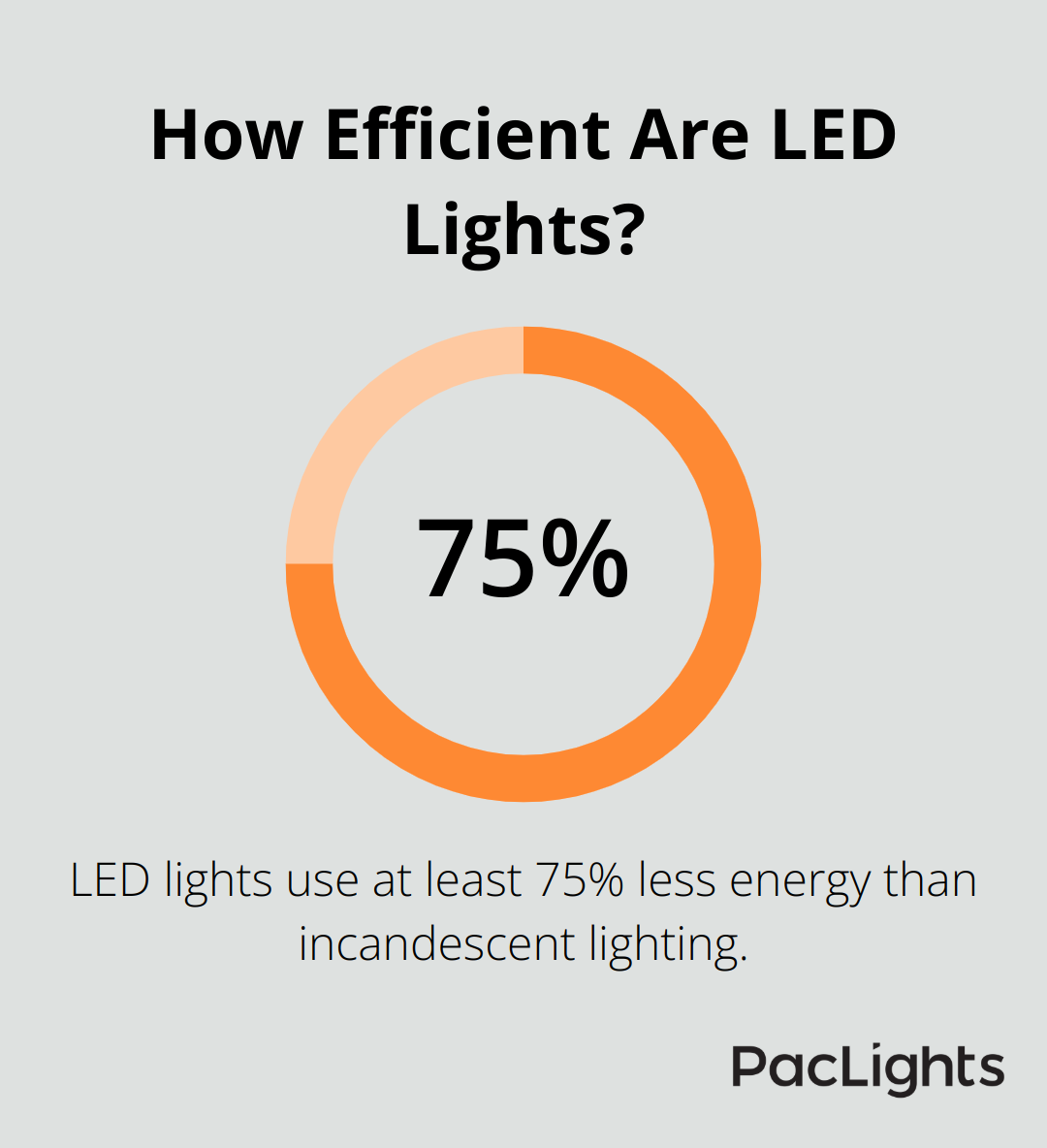
As we explore the world of recessed lighting, it’s important to consider another popular lighting option: track lighting systems. Let’s examine how these two lighting solutions compare and contrast in the next section.
Track Lighting Unveiled
What is Track Lighting?
Track lighting systems offer a unique approach to illuminating spaces. These fixtures consist of a linear housing (the track) that mounts to the ceiling or wall, with multiple light heads that can be positioned anywhere along the track. This design allows for incredible flexibility in directing light where it’s needed most.
Versatility in Design and Function
One of the standout features of track lighting is its adaptability. You can adjust, add, or remove light heads without any rewiring. This makes track lighting an excellent choice for spaces that frequently change, such as art galleries or retail stores. A boutique clothing store can reposition lights to highlight new merchandise displays each season with ease.
Energy Efficiency and Cost-Effectiveness
Modern track lighting systems often use LED bulbs, which are highly energy-efficient. The U.S. Department of Energy reports that LEDs use up to 90% less energy than traditional incandescent bulbs. This translates to significant savings on electricity bills over time. Additionally, the long lifespan of LED bulbs (up to 50,000 hours) means less frequent replacements, further reducing maintenance costs.
Installation Considerations
While track lighting offers many benefits, it’s important to consider the installation process. Unlike recessed lights, track systems are surface-mounted, which means they extend below the ceiling. This can be an advantage in spaces with high ceilings or where cutting into the ceiling isn’t feasible. However, in rooms with low ceilings, track lighting might feel obtrusive.
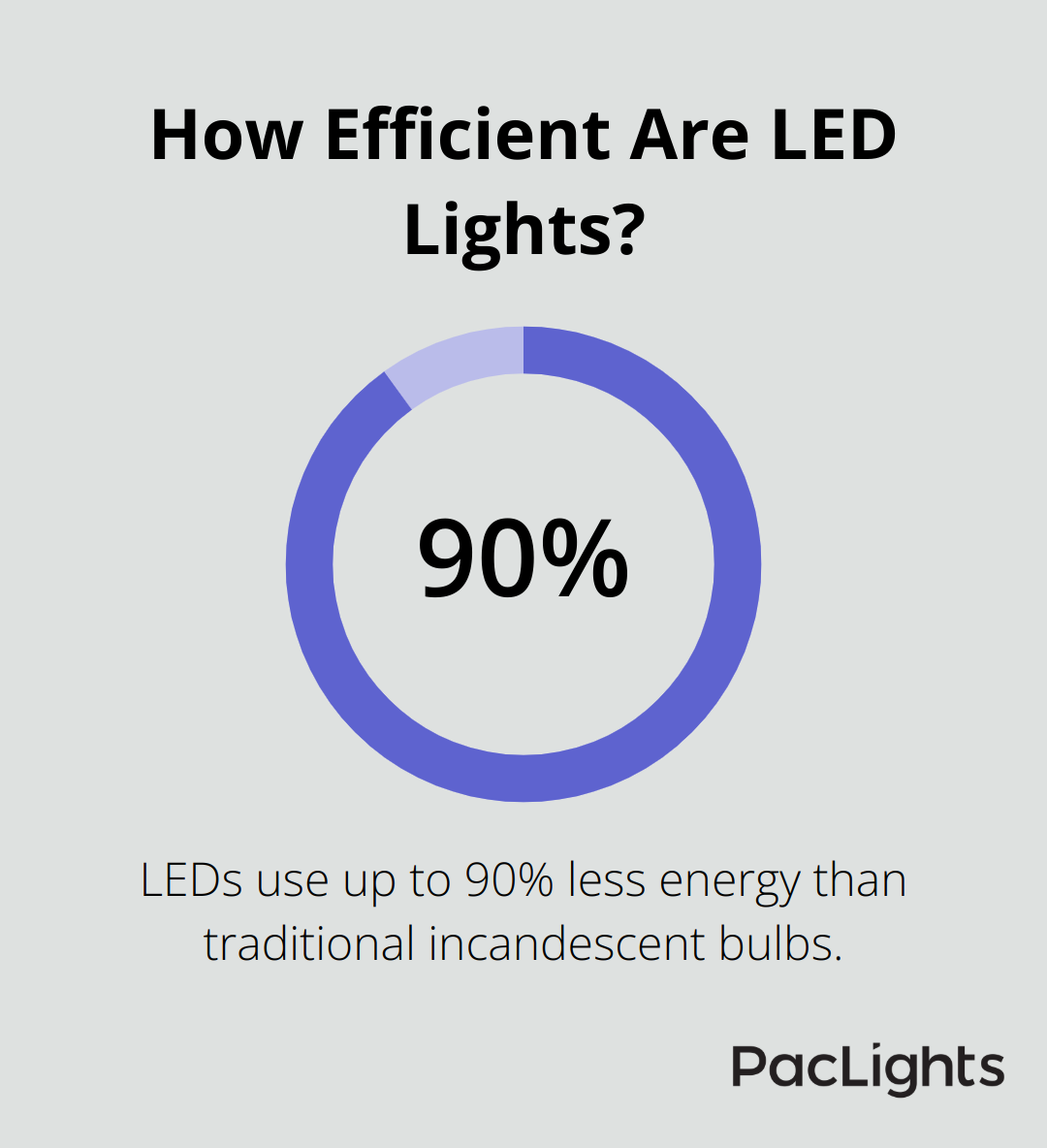
The installation process itself is generally simpler than recessed lighting, often requiring only a single electrical connection point. This can make track lighting a more cost-effective option for retrofitting existing spaces.
Optimal Applications
Track lighting excels in various settings. In kitchens, it provides targeted task lighting over islands or countertops. In living rooms, it highlights artwork or architectural features. Retail spaces benefit from the ability to easily adjust lighting as product displays change.
However, track lighting may not be the best choice for rooms where a sleek, minimalist ceiling appearance is desired. In these cases, recessed lighting might be a better option.
As we move forward, let’s compare track lighting and recessed can lights to help you make the best choice for your specific needs and preferences.
Recessed vs Track Lighting: A Practical Comparison
Energy Efficiency and Cost
Both recessed can lights and track lighting systems offer energy-efficient options, especially with LED bulbs. Track lighting, however, often provides an advantage in this area. Its precise light direction capability allows for fewer fixtures to illuminate a space effectively. This can result in lower energy consumption and reduced costs over time.
LED track lighting uses up to 85% less energy than traditional incandescent bulbs. This translates to substantial savings on electricity bills.
Installation and Flexibility
The installation process for these two lighting options differs significantly. Recessed can lights require ceiling holes and often need professional installation, especially in existing buildings. This can increase costs and installation time.
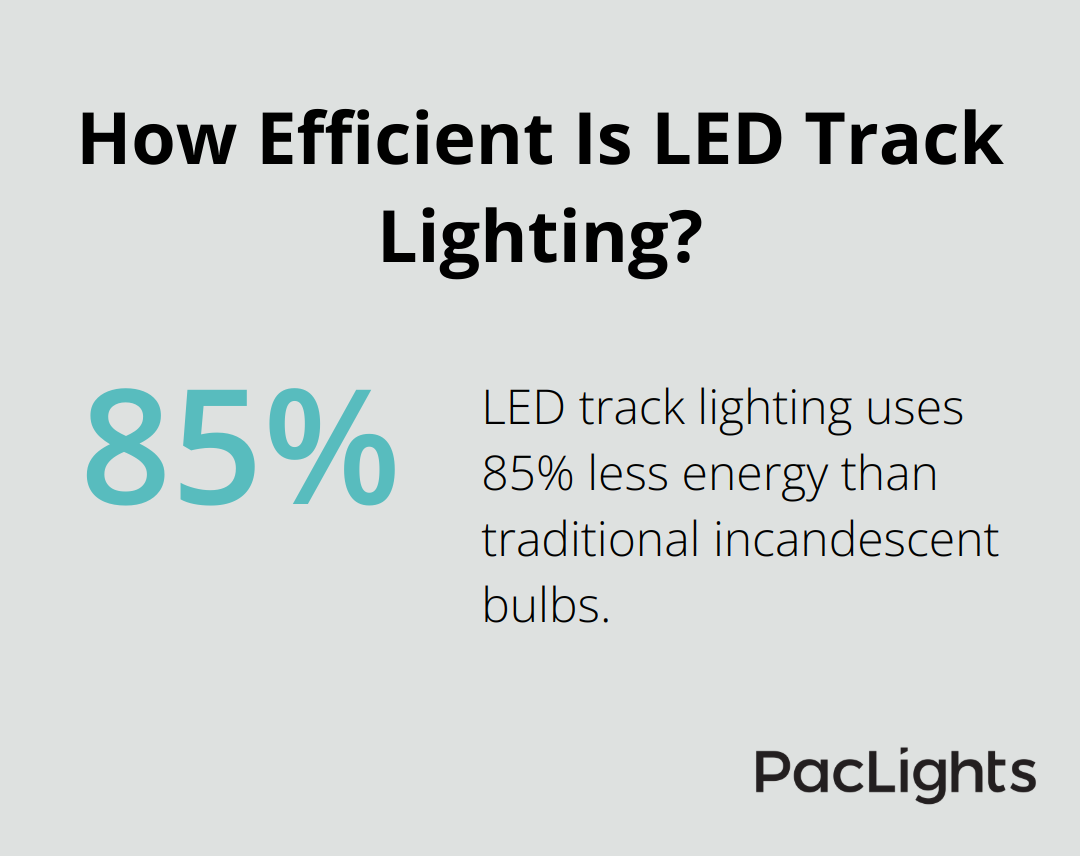
Track lighting installation is generally simpler. It typically needs only one electrical connection point, with the track mounted directly to the ceiling surface. This makes track lighting a more flexible option, particularly in rental properties or spaces where major modifications aren’t feasible.
Aesthetic Impact and Design Versatility
Recessed can lights provide a clean, minimalist look that’s hard to beat for a sleek, modern aesthetic. They remain virtually invisible when not in use, making them ideal for low ceilings or spaces where lighting fixtures shouldn’t be a focal point.
Track lighting, while more visible, offers unparalleled design versatility. You can easily change light direction, add or remove fixtures, and even swap different types of light heads. This makes track lighting an excellent choice for spaces that frequently change (such as art galleries or retail stores).
Maintenance and Longevity
Track lighting generally has the upper hand in maintenance. If a bulb burns out in a recessed can light, you often need to remove the entire fixture to replace it. With track lighting, you can simply remove the individual light head, making bulb replacement easy.
However, recessed can lights, once properly installed, tend to have a longer lifespan. Their position within the ceiling protects them from dust and damage. Quality LED recessed can lights can last up to 50,000 hours or more, requiring minimal maintenance over their lifetime.
In terms of adaptability to future needs, track lighting excels. As your space evolves, you can easily adjust your lighting setup without major renovations. This flexibility can save money and hassle in the long run.
Recessed can lights and track lighting systems offer distinct advantages for various lighting needs. Recessed can lights provide a sleek, minimalist aesthetic, perfect for creating a clean, modern look in spaces with low ceilings. Track lighting systems excel in flexibility and adaptability, allowing easy adjustments as lighting requirements change over time.
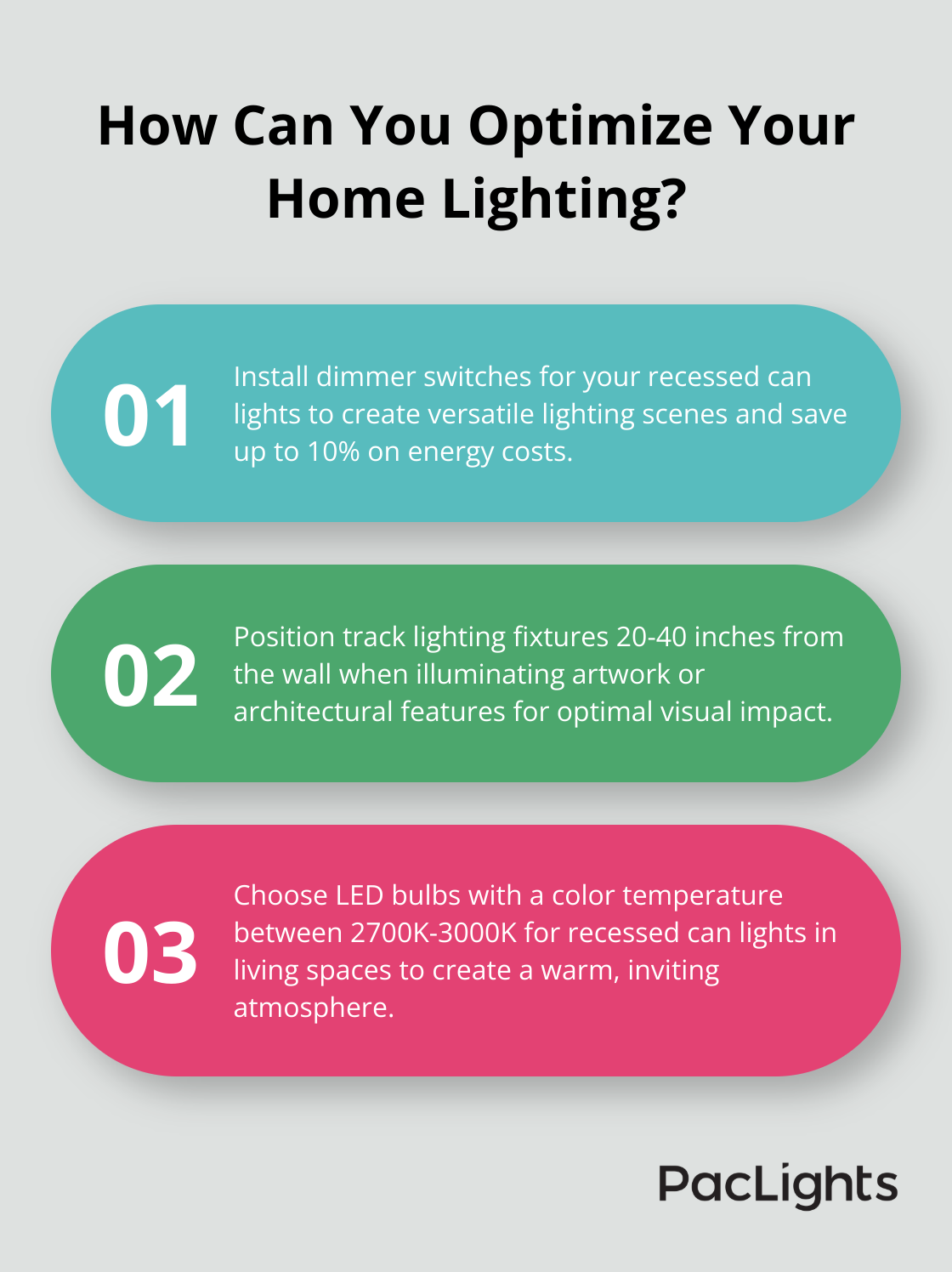
The best choice depends on your specific needs and preferences. Consider factors such as ceiling height, lighting requirements, and how often you might need to change your lighting configuration. Installation process and long-term maintenance also play a role in the decision-making process.
At PacLights, we offer a wide range of lighting solutions, including recessed can lights and track lighting systems. Our energy-efficient LED options can help reduce energy costs and carbon footprint (while our customizable designs ensure you find the perfect fit for your space). Contact us today to find the ideal lighting solution for your unique requirements.


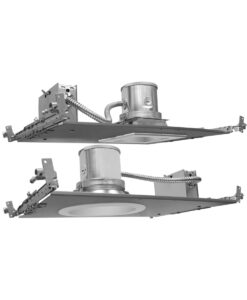
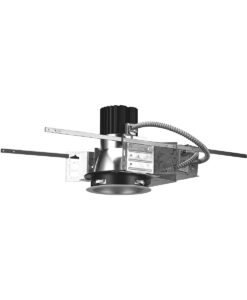
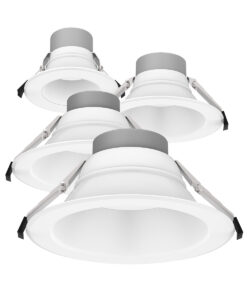
Disclaimer: PacLights is not responsible for any actions taken based on the suggestions and information provided in this article, and readers should consult local building and electrical codes for proper guidance.